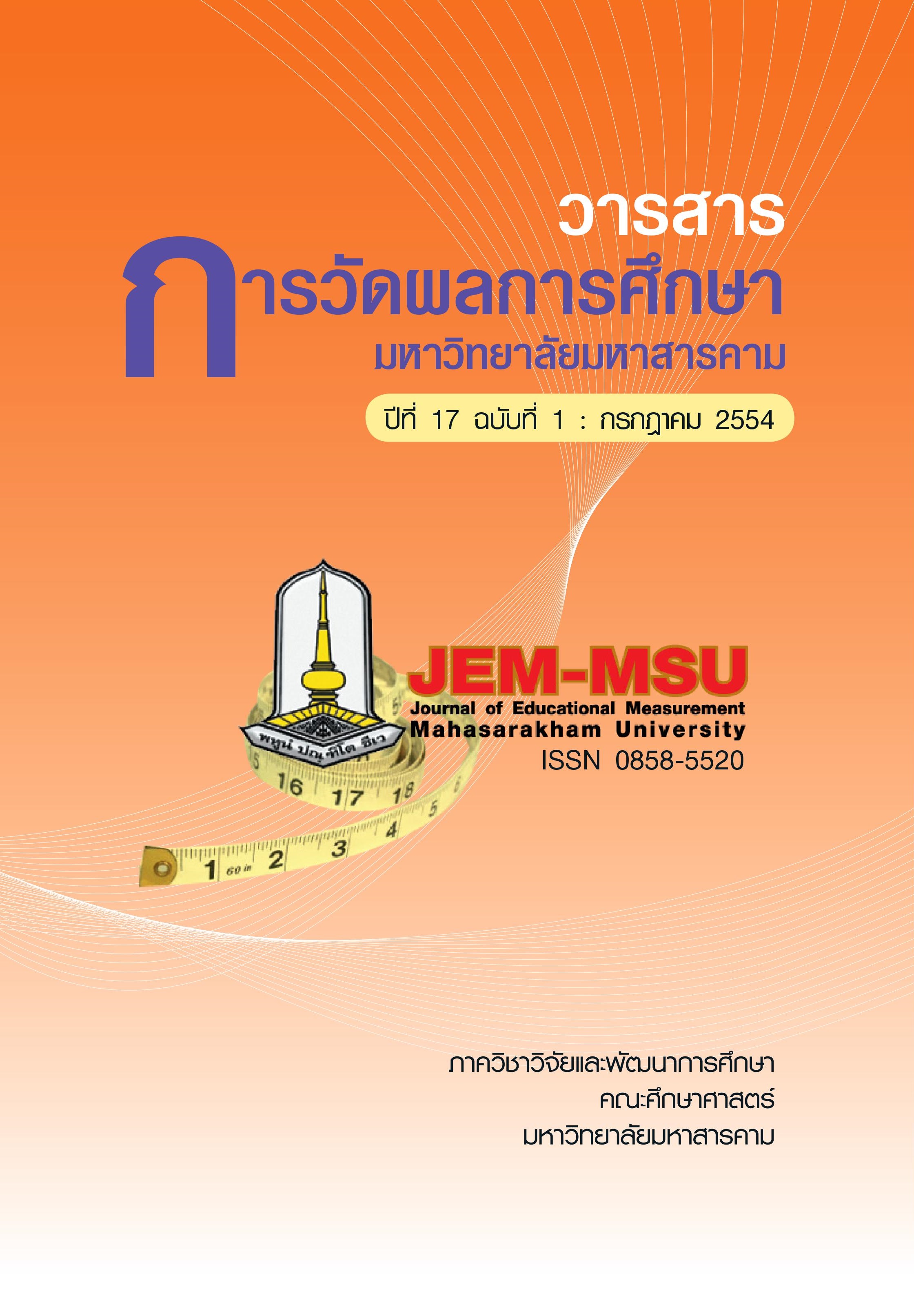A Discriminant Analysis of High and Low Mathematics Learning Achievements in Prathomsueksa 4 Students under the Si Sa Ket Offce of Educational Services Area Zone 3
Main Article Content
Abstract
Mathematics was an important subject contributing to country development
because mathematics was a fundamental knowledge of sciences, industrial technology
even being a background for all studies and researches. Nowadays, it was found that
the problem of low scores in mathematics testing conducted by the Bureau of Education
Testing were lower than the expectancy. Thus the conceptual idea of this research
was about factor influencing the mathematics learning achievements. This research
aimed to study discriminant factors of students having high and low mathematics
learning achievements and analyze discriminant factors related to high and low mathematics
learning achievements in Prathomsueksa 4 students under the Si Sa Ket Offce of
Educational Services Area Zone 3. Samples were 400 Prathomsueksa 4 students, under
the Si Sa Ket Offce of Educational Services Area Zone 3, who were studying in the
2nd semester of the academic year 2009, retrieved from the stratifed random sampling
technique. The students were discriminated into high and low mathematics learning
achievements by using the mathematics learning achievement test created by the
researcher. The students who having high mathematics learning achievement meant
the students whose scores were ranked at 75 percentile (P
75
) ; they were 201 students.
The students who having low mathematics learning achievement meant the students
whose scores were ranked at 25 percentile (P
25
), they were 199 students. Research
instruments were 1) two tests, consisting of a mathematics learning achievement test
for Prathomsueksa 4 comprising of 35 items having a diffculty (P) ranged from .44
to .73 with discriminating power (r) ranging from .21 to .72 and an overall reliability of .91
and a mathematics scholastics aptitude test consisting of 36 items with diffculty devices
(P) ranged from .44 to .74 having discriminating power (r) ranging from .21 to .63 and an
overall reliability of .82. 2) a 15-item aptitude toward mathematics measurement having
discriminating power (r
xy
) ranging from .27 to .68 with statistical signifcance of .01 and an
overall reliability of .77. 3) a questionnaire which was divided into 5 aspects ; namely,
relationship in the family, parental support, mathematics learning behavior, mathematics
teaching behavior and classroom environment, 10 items in each aspect and 50 items in
total ; it had discriminating power (r
xy
) ranging from .29 to .68 with statistical signifcance of
0.01 and an overall reliability of .76. Statistics used in data analysis were percentage, mean,
S.D., t-test and Wilks’s Lambda’s stepwise method was employed in discriminant analysis.
The research results were as follows :
1. Discriminant factors having the highest positive relation with statistical signifcance
of .01 were mathematics teaching behavior and classroom environment with the coeffcient
correlation of .572.
2. The students who had high and low mathematics learning achievement
showed mathematics scholastics aptitudes, attitudes toward mathematics and classroom
environment differently with statistical signifcance of .01.
3. There were two factors with discriminating power between high and low
mathematics learning achievement students; namely, mathematics scholastics aptitudes
and attitudes toward mathematics. These two factors could discriminate between
high and low mathematics learning achievement students accurately at 89.3 percentile
which having statistical signifcance of .01.
The prediction equation in raw scores
Y/ = -6.265 + .205 (IQ) + .057 (ATT)
The prediction equation in standard scores
Z/
Y
= .928 (IQ) + .437 (ATT)
In conclusion, the research fndings could be applied as a guideline in teaching
and learning construction in order to create pleasant attitudes toward mathematics in
students and be a part of learning development to encourage higher scholastics aptitude
which would contribute to higher learning achievement.
Article Details
The content and information contained in the published article in the Journal of Educational Measurement Mahasarakham University represent the opinions and responsibilities of the authors directly. The editorial board of the journal is not necessarily in agreement with or responsible for any of the content.
The articles, data, content, images, etc. that have been published in the Journal of Educational Measurement Mahasarakham University are copyrighted by the journal. If any individual or organization wishes to reproduce or perform any actions involving the entirety or any part of the content, they must obtain written permission from the Journal of Educational Measurement Mahasarakham University.


